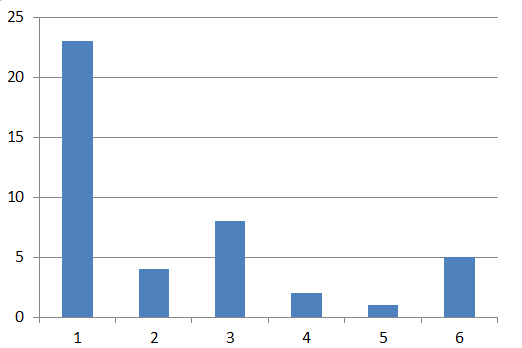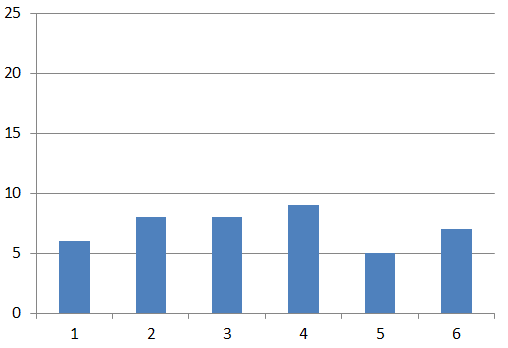很久很久以前看过笨神的一篇文章JVM源码分析之String.intern()导致的YGC不断变长,其原因是YGC过程需要对StringTable做扫描,而String.intern()就是在StringTable中保存这个对象的引用,如果String.intern()添加越来越多不同的对象,那么StringTable就越大,扫描StringTable的时间就越长,从而导致YGC耗时越长;那么如何确定YGC耗时越来越长是StringTable变大引起的呢?
介绍一个参数-XX:+PrintStringTableStatistics,看名字就知道这个参数的作用了:打印出StringTable的统计信息;再详细一点描述:在JVM进程退出时,打印出StringTable的统计信息到标准日志输出目录中。
JDK版本要求:JDK 7u6 +
验证问题
验证代码如下:
import java.util.UUID;
/**
* @author afei
* @version 1.0.0
* @since 2017年08月16日
*/
public class StringInternTest {
public static void main(String[] args) throws Exception {
for (int i=0; i=100000 && i%100000==0){
System.out.println("i="+i);
}
}
}
}
执行命令如下:
java -verbose:gc -XX:+PrintGC -XX:+UseConcMarkSweepGC -XX:+UseParNewGC -XX:CMSInitiatingOccupancyFraction=75 -XX:+UseCMSInitiatingOccupancyOnly -XX:+PrintStringTableStatistics -Xmx1g -Xms1g -Xmn64m StringInternTest
从gc日志可以看出YGC时间越来越长:
[GC (Allocation Failure) 52480K->5691K(1042048K), 0.0109821 secs]
i=100000
[GC (Allocation Failure) 65261K->19731K(1042048K), 0.0233471 secs]
i=200000
[GC (Allocation Failure) 72211K->26796K(1042048K), 0.0266068 secs]
i=300000
[GC (Allocation Failure) 79276K->33860K(1042048K), 0.0262006 secs]
[GC (Allocation Failure) 86340K->40924K(1042048K), 0.0295842 secs]
... ...
[GC (Allocation Failure) 192868K->147456K(1042048K), 0.0661785 secs]
i=1400000
[GC (Allocation Failure) 199936K->154521K(1042048K), 0.0685919 secs]
[GC (Allocation Failure) 207001K->161585K(1042048K), 0.0707886 secs]
i=1500000
[GC (Allocation Failure) 214065K->168649K(1042048K), 0.0744149 secs]
[GC (Allocation Failure) 221129K->175714K(1042048K), 0.0766862 secs]
i=1600000
[GC (Allocation Failure) 228194K->182778K(1042048K), 0.0802783 secs]
String.intern() 250w个String对象:
执行命令:
java -verbose:gc -XX:+PrintGC -XX:+UseConcMarkSweepGC -XX:+UseParNewGC -XX:CMSInitiatingOccupancyFraction=75 -XX:+UseCMSInitiatingOccupancyOnly -XX:+PrintStringTableStatistics -Xmx1g -Xms1g -Xmn64m StringInternTest
当i=2500000,即往StringTable添加了250w个引用时,kill调这个进程,能够看到PrintStringTableStatistics这个参数作用下输出的StringTable相关信息(输出信息中还有SymbolTable ,这篇文章不做讨论):
StringTable statistics:
Number of buckets : 60013 = 480104 bytes, avg 8.000
Number of entries : 2568786 = 61650864 bytes, avg 24.000
Number of literals : 2568786 = 287662080 bytes, avg 111.984
Total footprint : = 349793048 bytes
Average bucket size : 42.804
Variance of bucket size : 43.104
Std. dev. of bucket size: 6.565
Maximum bucket size : 82
且这时候的YGC时间达到了0.12s:
i=2500000
[GC (Allocation Failure) 320041K->274625K(1042048K), 0.1268211 secs]
[GC (Allocation Failure) 327105K->281693K(1042048K), 0.1236515 secs]
String.intern() 500w个String对象:
执行命令:
java -verbose:gc -XX:+PrintGC -XX:+UseConcMarkSweepGC -XX:+UseParNewGC -XX:CMSInitiatingOccupancyFraction=75 -XX:+UseCMSInitiatingOccupancyOnly -XX:+PrintStringTableStatistics -Xmx1g -Xms1g -Xmn64m StringInternTest
当i=5000000,即往StringTable添加了500w个引用时,kill调这个进程,输出结果如下:
StringTable statistics:
Number of buckets : 60013 = 480104 bytes, avg 8.000
Number of entries : 5082093 = 121970232 bytes, avg 24.000
Number of literals : 5082093 = 569152512 bytes, avg 111.992
Total footprint : = 691602848 bytes
Average bucket size : 84.683
Variance of bucket size : 85.084
Std. dev. of bucket size: 9.224
Maximum bucket size : 123
YGC时间达到了0.24s:
i=5000000
[GC (Allocation Failure) 595600K->550184K(1042048K), 0.2425553 secs]
PrintStringTableStatistics结果解读:
从PrintStringTableStatistics输出信息可以看出StringTable的bucket数量默认为60013 ,且每个bucket占用8个字节(说明:如果是32位系统,那么每个bucket占用4个字节);Number of entries即Hashtable的entry数量为2568786,因为我们String.intern( )了250w个不同的String对象;Average bucket size表示表示bucket中LinkedList的平均size,Maximum bucket size 表示bucket中LinkedList最大的size,Average bucket size越大,说明Hashtable碰撞越严重,由于bucket数量固定为60013,随着StringTable添加的引用越来越多,碰撞越来越严重,YGC时间越来越长。
String.intern() 250w个String对象&-XX:StringTableSize=2500000:
执行命令:
java -verbose:gc -XX:+PrintGC -XX:+UseConcMarkSweepGC -XX:+UseParNewGC -XX:CMSInitiatingOccupancyFraction=75 -XX:+UseCMSInitiatingOccupancyOnly -XX:+PrintStringTableStatistics -Xmx1g -Xms1g -Xmn64m -XX:StringTableSize=2500000 StringInternTest
当i=2500000,kill调这个进程,输出结果如下:
StringTable statistics:
Number of buckets : 2500000 = 20000000 bytes, avg 8.000
Number of entries : 2573556 = 61765344 bytes, avg 24.000
Number of literals : 2573556 = 288196288 bytes, avg 111.984
Total footprint : = 369961632 bytes
Average bucket size : 1.029
Variance of bucket size : 1.028
Std. dev. of bucket size: 1.014
Maximum bucket size : 10
YGC时间从0.12s下降到了0.09s:
i=2500000
[GC (Allocation Failure) 320216K->274800K(1042048K), 0.0890073 secs]
[GC (Allocation Failure) 327280K->281865K(1042048K), 0.0926348 secs]
String.intern() 500w个String对象&-XX:StringTableSize=5000000:
执行命令:
java -verbose:gc -XX:+PrintGC -XX:+UseConcMarkSweepGC -XX:+UseParNewGC -XX:CMSInitiatingOccupancyFraction=75 -XX:+UseCMSInitiatingOccupancyOnly -XX:+PrintStringTableStatistics -Xmx1g -Xms1g -Xmn64m -XX:StringTableSize=5000000 StringInternTest
当i=5000000,即往StringTable添加了500w个引用时,kill调这个进程,输出结果如下:
StringTable statistics:
Number of buckets : 5000000 = 40000000 bytes, avg 8.000
Number of entries : 5151776 = 123642624 bytes, avg 24.000
Number of literals : 5151776 = 576957008 bytes, avg 111.992
Total footprint : = 740599632 bytes
Average bucket size : 1.030
Variance of bucket size : 1.030
Std. dev. of bucket size: 1.015
Maximum bucket size : 9
YGC时间从0.24s降到了0.17s:
i=5000000
[GC (Allocation Failure) 595645K->550229K(1042048K), 0.1685862 secs]
[GC (Allocation Failure) 602709K->557293K(1042048K), 0.1706642 secs]
PrintStringTableStatistics&StringTableSize结果解读:
设置StringTableSize一个合适的值,即bucket数量为期望的数量后,碰撞的概率明显降低,由Average bucket size和Maximum bucket size的值明显小于未配置StringTableSize参数时的值可知,且YGC时间也明显降低。另外, 最好通过BTrace分析是哪里频繁调用String.intern(), 确实String.intern()没有滥用的前提下, 再增大StringTableSize的值。
引申问题
既然StringTable是Hashtable数据结构,那为什么不能自己通过rehash扩大bucket数量来提高性能呢?JVM中StringTable的rehash有点不一样, JVM中StringTable的rehash不会扩大bucket数量,而是在bucket不变的前提下,通过一个新的seed尝试摊平每个bucket中LinkedList的长度(想想也是,如果StringTable能通过rehash扩大bucket数量,那还要StringTableSize干嘛),rehash大概是一个如下图所示的过程,rehash前后bucket数量不变,这是重点:
假设reash前数据分布(23,4,8,2,1,5):
reash后可能数据分布(6,8,8,9,5,7):
对应的源码在hashtable.cpp中--第一行代码就是初始化一个新的_seed用于后面的hash值计算:
// Create a new table and using alternate hash code, populate the new table
// with the existing elements. This can be used to change the hash code
// and could in the future change the size of the table.
template void Hashtable::move_to(Hashtable* new_table) {
// Initialize the global seed for hashing.
_seed = AltHashing::compute_seed();
assert(seed() != 0, "shouldn't be zero");
int saved_entry_count = this->number_of_entries();
// Iterate through the table and create a new entry for the new table
for (int i = 0; i < new_table->table_size(); ++i) {
for (HashtableEntry* p = bucket(i); p != NULL; ) {
HashtableEntry* next = p->next();
T string = p->literal();
// Use alternate hashing algorithm on the symbol in the first table
unsigned int hashValue = string->new_hash(seed());
// Get a new index relative to the new table (can also change size)
int index = new_table->hash_to_index(hashValue);
p->set_hash(hashValue);
// Keep the shared bit in the Hashtable entry to indicate that this entry
// can't be deleted. The shared bit is the LSB in the _next field so
// walking the hashtable past these entries requires
// BasicHashtableEntry::make_ptr() call.
bool keep_shared = p->is_shared();
this->unlink_entry(p);
new_table->add_entry(index, p);
if (keep_shared) {
p->set_shared();
}
p = next;
}
}
// give the new table the free list as well
new_table->copy_freelist(this);
assert(new_table->number_of_entries() == saved_entry_count, "lost entry on dictionary copy?");
// Destroy memory used by the buckets in the hashtable. The memory
// for the elements has been used in a new table and is not
// destroyed. The memory reuse will benefit resizing the SystemDictionary
// to avoid a memory allocation spike at safepoint.
BasicHashtable::free_buckets();
}
结论
YGC耗时的问题确实比较难排查,遍历StringTable只是其中一部分,通过PrintStringTableStatistics参数可以了解我们应用的StringTable相关统计信息,且可以通过设置合理的StringTableSize值降低碰撞从而减少YGC时间。另一方面,增大StringTableSize的值有什么影响呢?需要多消耗一点内存,因为每一个bucket需要8个byte(64位系统)。与它带来的YGC性能提升相比,这点内存消耗还是非常值得的。然而StringTable的统计信息需要在JVM退出时才输出,不得不说是一个遗憾,哎!

